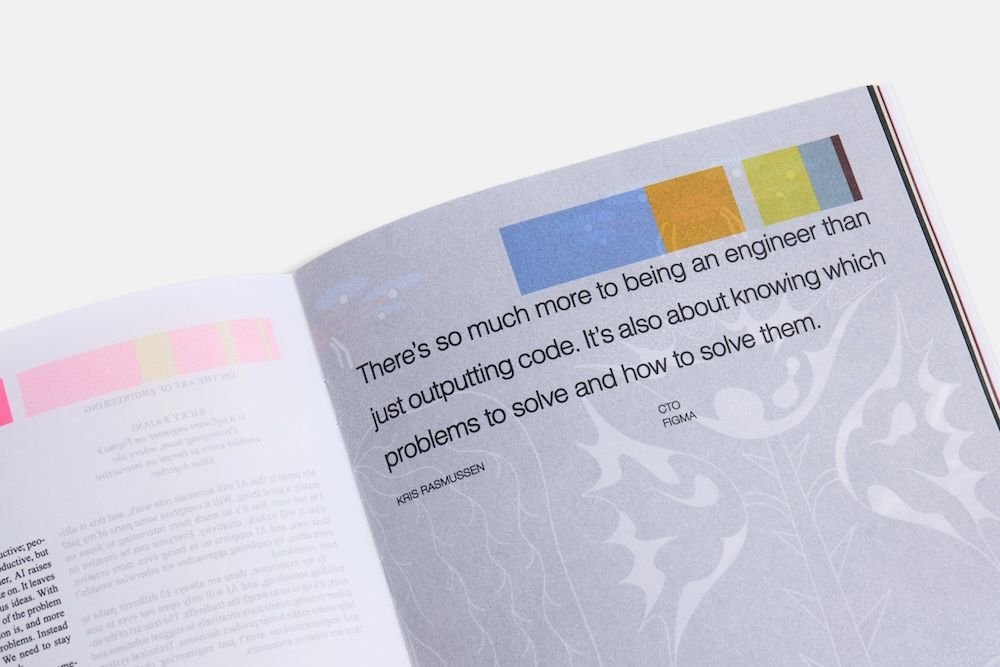Madeline Gannon interviewed in The Prompt, a magazine by Figma about AI, Design, and Code
Madeline Gannon was interviewed for The Prompt, a magazine from Figma exploring Artificial Intelligence, Design, and Code. In the article Are we finally entering the age of androids? author Jenny Xie speaks with Gannon and humanoid robot makers Engineered Arts and Argodesign about the role Design can play in influencing how robotics and AI will impact society. The hardware is here, but are we ready for it?
Read the full article here and magazine here.
Special thanks to Jenny Xie and Amber Bravo for including us in the conversation.
Opening spread of the article, Are we finally entering the age of androids?
Excerpts below:
What the illusion of sentience unlocks
Humans have an innate tendency toward animism, anthropomorphism, and pareidolia; we see faces everywhere. And one thing’s for sure: You don’t have to try very hard to trick us. “We’re looking for animacy in everything around us,” says Madeline Gannon, multidisciplinary designer and founder of research studio Atonaton. Describing herself as part engineer, part Jane Goodall, Madeline recasts industrial robots as animalistic characters: She turns one into a googly-eye Cyclops, and others into an inquisitive flock, inspired by a bevy of swans she encountered in Zürich. “Body language is a common way of broadcasting and receiving information,” she continues. “We see this most prevalently in our relationship to animals. If you see something in the distance, you check if its haunches are tightened. You’re looking to see if you can eat it, or if it can eat you.”
[…]
In general, however, Madeline wants us to think beyond the narratives we’ve been fed. “The possibilities are endless,” she says. “The probabilities are kind of boring.” She points out that though we’re certain of what we don’t want AI robots to do—take over our jobs, rob us of a sense of fulfillment—what we do want is much more nebulous, and getting there will necessitate critical thinking, cross-disciplinary work, and realizing our own agency. That’s why her work hinges on defamiliarizing long-established hardware; it shakes us out of the status quo and reminds us of the human provenance of these machines. “I try to navigate the engineering and hard science problems, and the aesthetics and poetics of that,” she says. “My biggest aspiration is not to impose a future I want, but to give tools and inspiration to others to think about the futures they want. There are too few people deciding what future arrives.”







